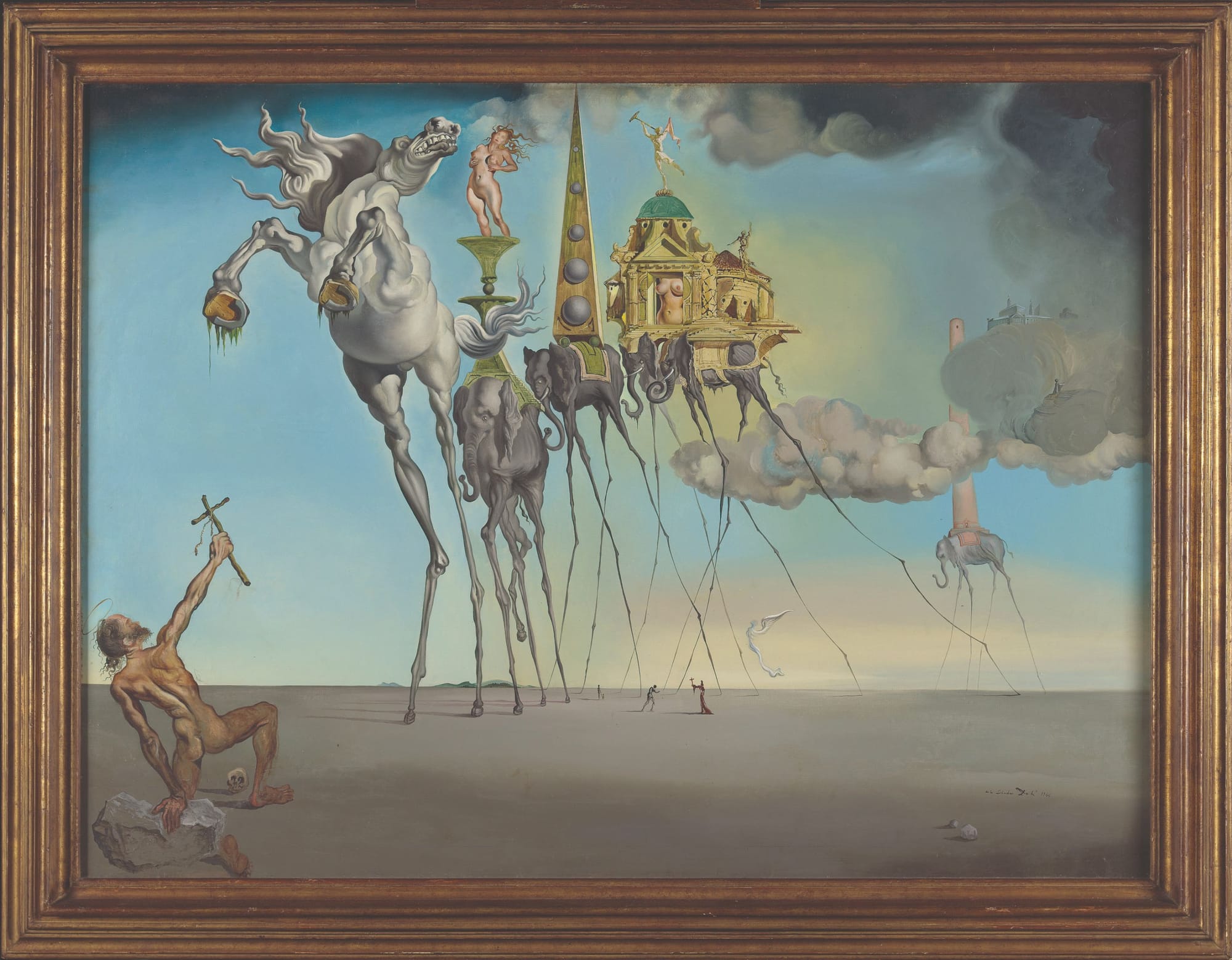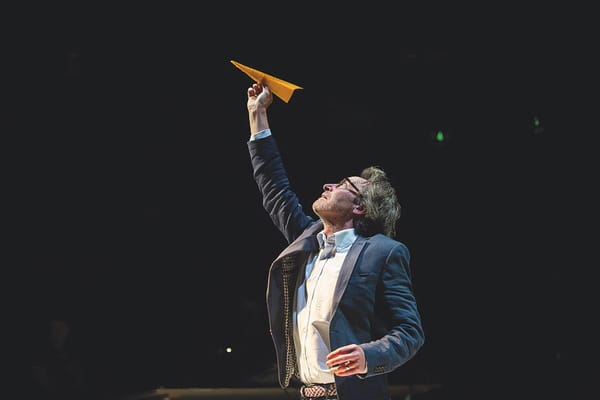Surrealist Superstars
Magritte and Dali are two of the biggest names of the Surrealist movement, which changed the art world with its daring incorporation of the subconscious into artistic themes in the mid-20th century. You can now see the combined highlights of their works

4 stars
Brussels’s Place Royale is a mecca of art, like a small, art-oriented brother to the museums surrounding our beautiful campus. The Royal Museums that flank it comprise some of the finest works of the European canon, from the Flemish masters to the modern genius of Magritte. The latter’s personal museum quickly became a favourite of mine when I discovered it last year, and it was already back then that a single painting by Dali amongst the sea of Magritte’s works piqued my interest.
Saint Anthony, naked and ragged, kneels on one side of the canvas, confronted with fantastically vulgar beasts symbolising the devil’s temptations. A white horse heads this procession, seemingly kept at bay by nothing but the cross that the naked saint is brandishing above his head. The proportions are horrifying. The horse seems to be at once right on top of poor old Tony, and at the same time his hind legs are far behind him, spindly and grotesque. But the gangly legs look even more terrifying on the elephants following in his wake. These carry beautiful naked women, palaces, an obelisk, and what appears to be a minaret. It is certainly a very striking image but more than that, it sheds light on some of the obsessions that both artists shared: the little window framing a woman’s body, the magnificent clouds, the masterful and lifelike rendering. Like many of Dali’s most poignant works, it is situated in the desert under a mesmerising blue sky. This stark blue was flashing in my mind as I made my way to see Dali x Magritte, the exhibition commemorating ten years of the Belgian Surrealist master’s very own museum.

The wide avenues of Brussels are perfect for contemplation, especially with the sky above looking like freshly mixed concrete. With some time to kill before my scheduled slot, I lazily made my way down Avenue Louise, thinking long and hard about the music that would befit the vibe of the exhibition. In the end I mixed myself a punchbowl of The Doors and Pink Floyd. I was happy with my choice.
As an introduction, the curators treated the museumgoers with a digital take on a painting that held great significance for Magritte’s foray into surrealism, and the relationship between the two artists. Threatening Weather was painted as Magritte was visiting Dali on the coast of the Mediteranean, along with some of the other surrealist bigshots. Mingling with Dali’s then wife, Georgette, as well as his future wife, Gala, accompanied by Paul Eluard, gave Magritte inspiration to re-evaluate the role of representation in his works. A tuba, a naked female torso, and a chair float above the coast of Cadaques in cloud form in the original work, and likewise in the installation. They morph into existence slowly from ordinary clouds, giving us a rather simplistic and awkward but nevertheless interesting insight into how the artists first tapped into the surrealist vein.
The exhibition then proceeds through sections outlining the differences and similarities of both artists’ approaches. These are divided methodically but unfortunately do not stimulate too much of a narrative. The first common point is the motive of the human eye as the prism through which we perceive the (sur)real. On Dali’s side, the example of this is an obvious one - Un Chien Andalou. The contrast between the shocking visuals in Dali’s short film collaboration with Buñuel and Magritte’s depction of an eye on a circular canvas could not be starker. Dali’s version of surrealism constantly teeters on the borderline of the violent (see also vulgar and vexing), while Magritte’s is more toned down. Over time, Dali’s work became less freely associative, and Magritte’s became more daring.
In the obsession to unearth what lies underneath the surface of everyday reality, both artists had running themes. Magritte had his tuba, placed with the mouthpiece facing up, and the windows, which served not to reveal but to play with depth perception and their ordinary role of revealing something beyond. Dali had his spectacular desert scenes, the objects smooth and luscious but at the same time shocking. The Spaniard’s ability to entice with the beauty of his colour palette and brushstrokes, while at the same time horrifying us with his imagery, makes him unique. On the subject of dreams, Magritte did not believe in their portrayal as an entry into the surreal, while Dali freely tapped into his Freudian inspirations (perhaps due to his Oedipal obsessions). They also both had a penchant for using writing in their art. Be it Magritte’s ‘Ceci n’est pas une pipe’, French for ‘This is not a pipe’, or Dali’s The Enigma of Desire/My mother, My mother, My mother, they both used words to add a new dimension. ‘In a painting, words have the same substance as images’, Magritte claimed.
Perhaps the most important uniting aspect for both artists is the incredible fame that they both reaped. Dali’s ridiculous curvature of moustache sitting above one of his quotes and Magritte’s pipe are both staples of gallery shops around the world. Whether one approves of Dali’s extravagant lifestyle and questionable politics, no one can dispute the impact that both artists’ popularity had for others following them. Both had unprecedented success across the Atlantic, and the impact that the movement they spearheaded between the wars had on art following the Second World War cannot be understated. They were two of the first truly global art superstars, and that in itself is an achievement.








